
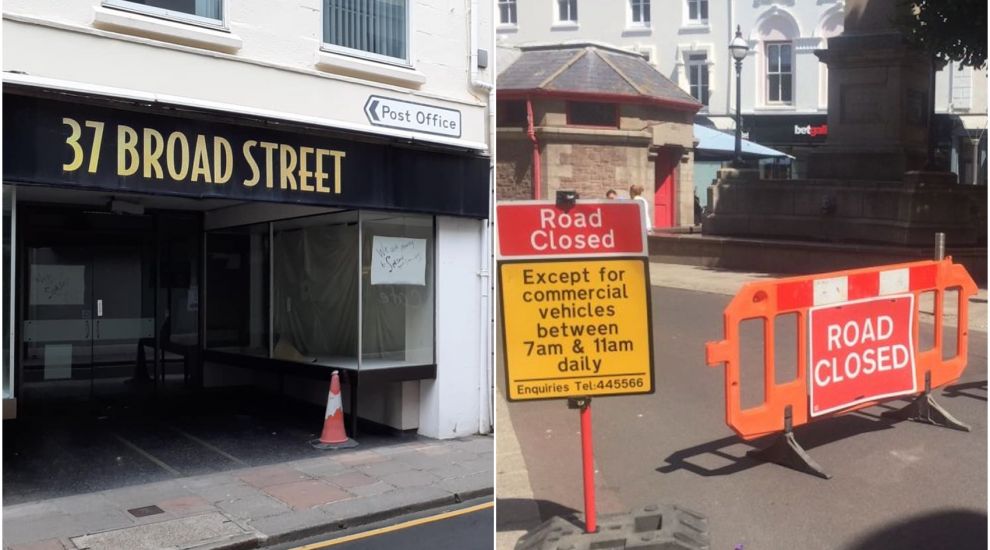

Property developer Le Masurier has confirmed it is working on a redevelopment proposal for Broad Street, following the Constable of St Helier’s proposition to keep it closed to traffic for at least the rest of this year.
In response to questions from Express, Le Masurier Managing Director Brian McCarthy confirmed that the company was looking into putting forward plans to redevelop and further pedestrianise it, though did not confirm in detail what they would be, beyond “regeneration".
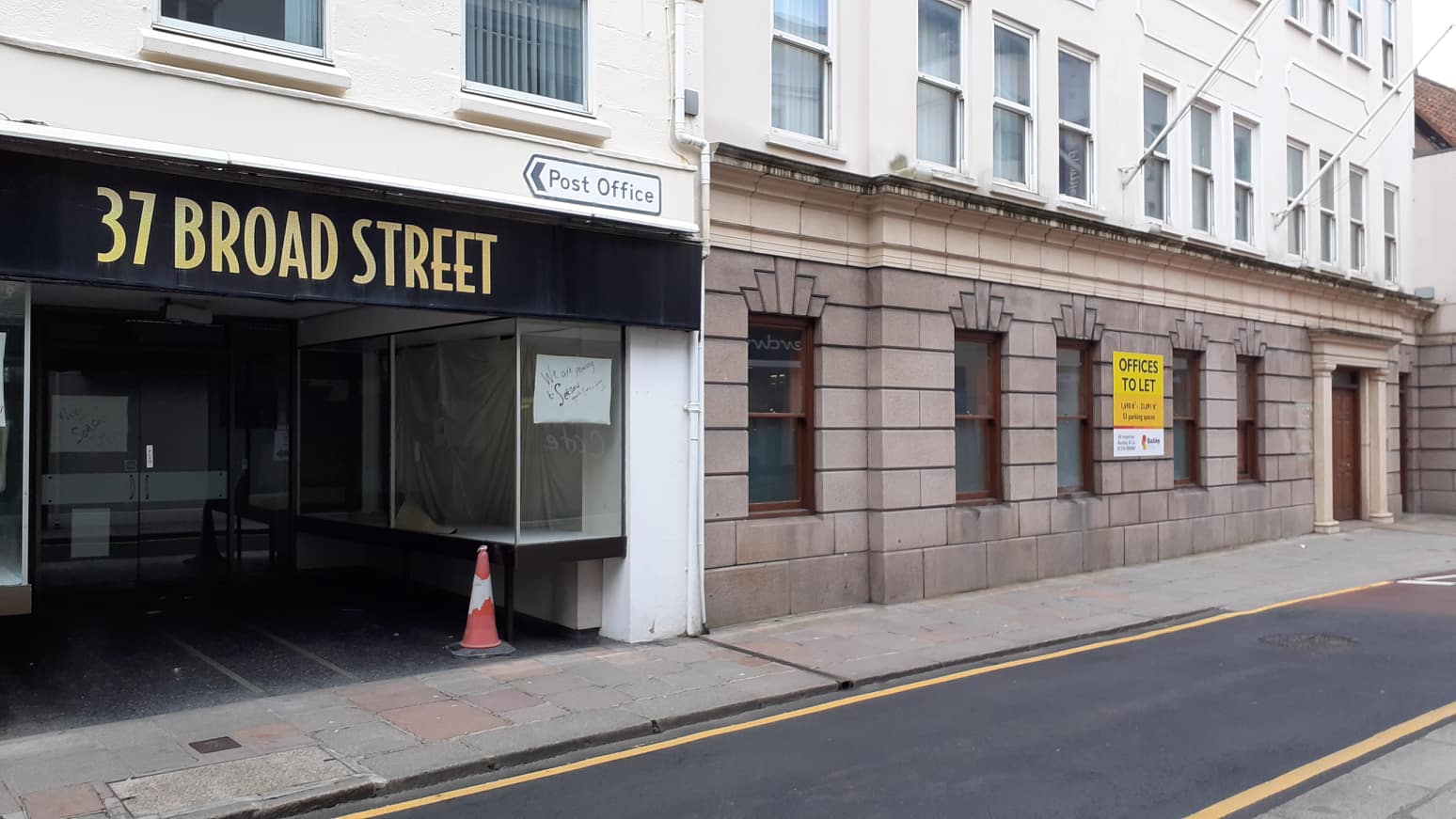
Pictured: Le Masurier own own 31, 33, 35, 37, 39 and 41 Broad Street.
“We own two acres of land between Broad Street and Commercial Street and are working on a redevelopment proposal which would see further pedestrian connectivity linking Commercial Street, Broad Street and into King Street,” Mr McCarthy said.
“The opportunity to revitalise these areas is tremendous, particularly with cafes, bars and al fresco dining.”
Le Masurier’s comments come following Constable Simon Crowcroft’s proposition to the States Assembly to keep Broad Street closed until the end of 2021 and trial “initiatives that enhance the appeal and the vibrancy of the pedestrian-priority area,” which could include features like market stalls, live entertainment and pop-up shops.
The issue of pedestrianising Broad Street has proved divisive since the Infrastructure Minister closed the street last May, citing medical advice warning against large gatherings of people, particularly at the Charing Cross zebra crossing, as the key reason.
Though this has been disputed by the Chamber of Commerce, who said in September there was medically “no evidence” for the closure, the Minister has still maintained these reasons and upheld the closure, promising that he will open it as soon as he can.
With restrictions now easing, questions are still being raised from a number of businesses on the street about when exactly this reopening will be - however, there are others who have cited the closure as an opportunity to trial a completely pedestrianised Broad Street, and keep it traffic-free for good.
Express explores the voices of some of the stakeholders, their points and concerns, and lays out the conflicting visions vying for the future of town’s centre.
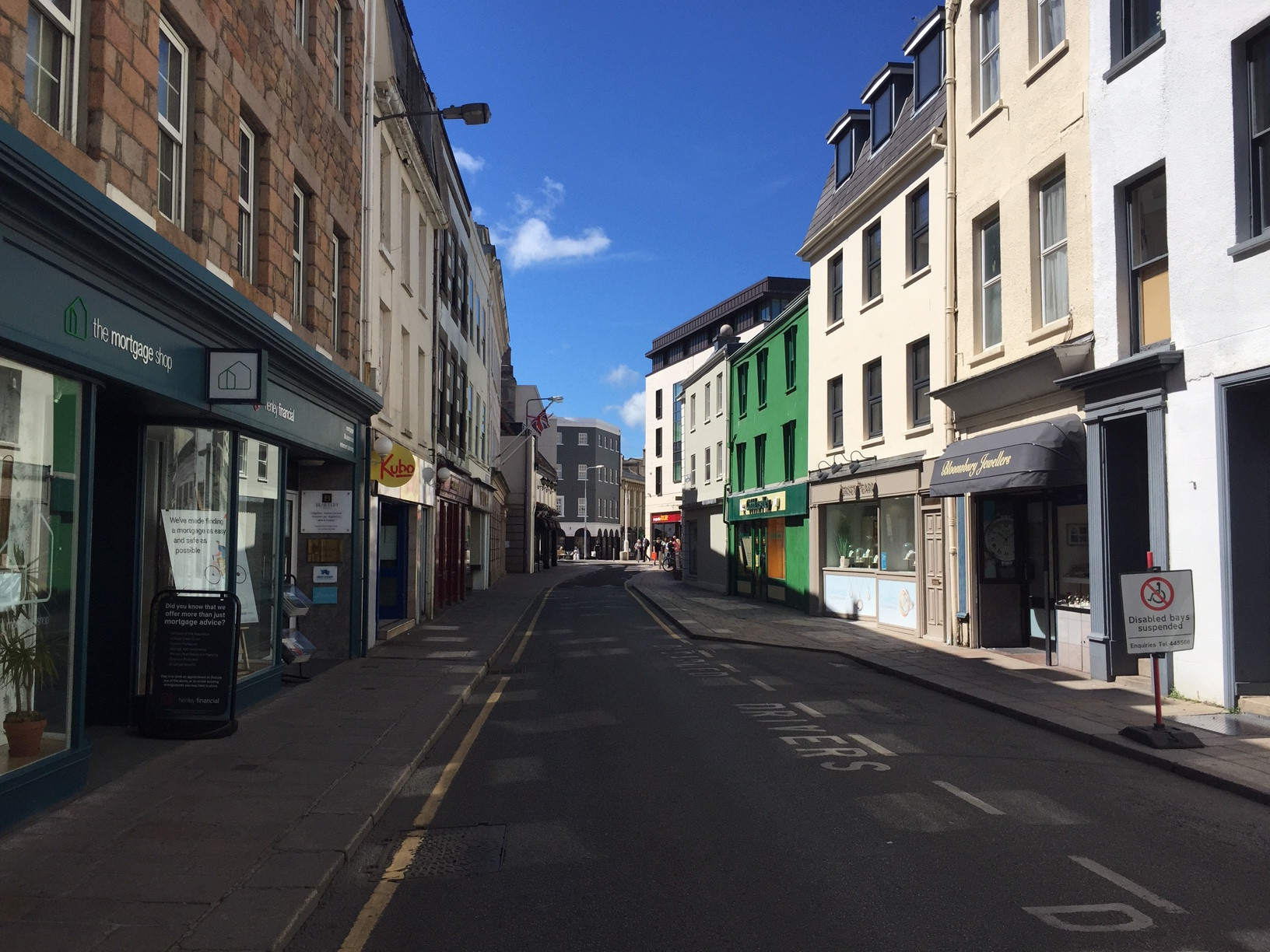
Pictured: Broad Street was first closed in May 2020.
For a number of businesses on and around Broad Street, the Constable’s move to extend the street’s closure is not a welcome one.
Simon Ogden, owner of cafe Simple Simon’s on Charing Cross, argued that pop-up shops could “destroy” business for many of town’s mainstay cafes: “We’ve got about 25/30 cafes in this area, based on probably a few thousand people coming into town, so it’s spread among them,” he said.
“You add another half a dozen or so pop up catering establishments that don’t have the overheads, don’t have the rents - how do you compete?”
He further added that for himself and other businesses, the 11:00 cut-off time for deliveries of stock to come onto the road had meant that sometimes their orders would not be delivered on time - indeed, Fotosound previously talked to Express about their difficulties with getting stock on time.
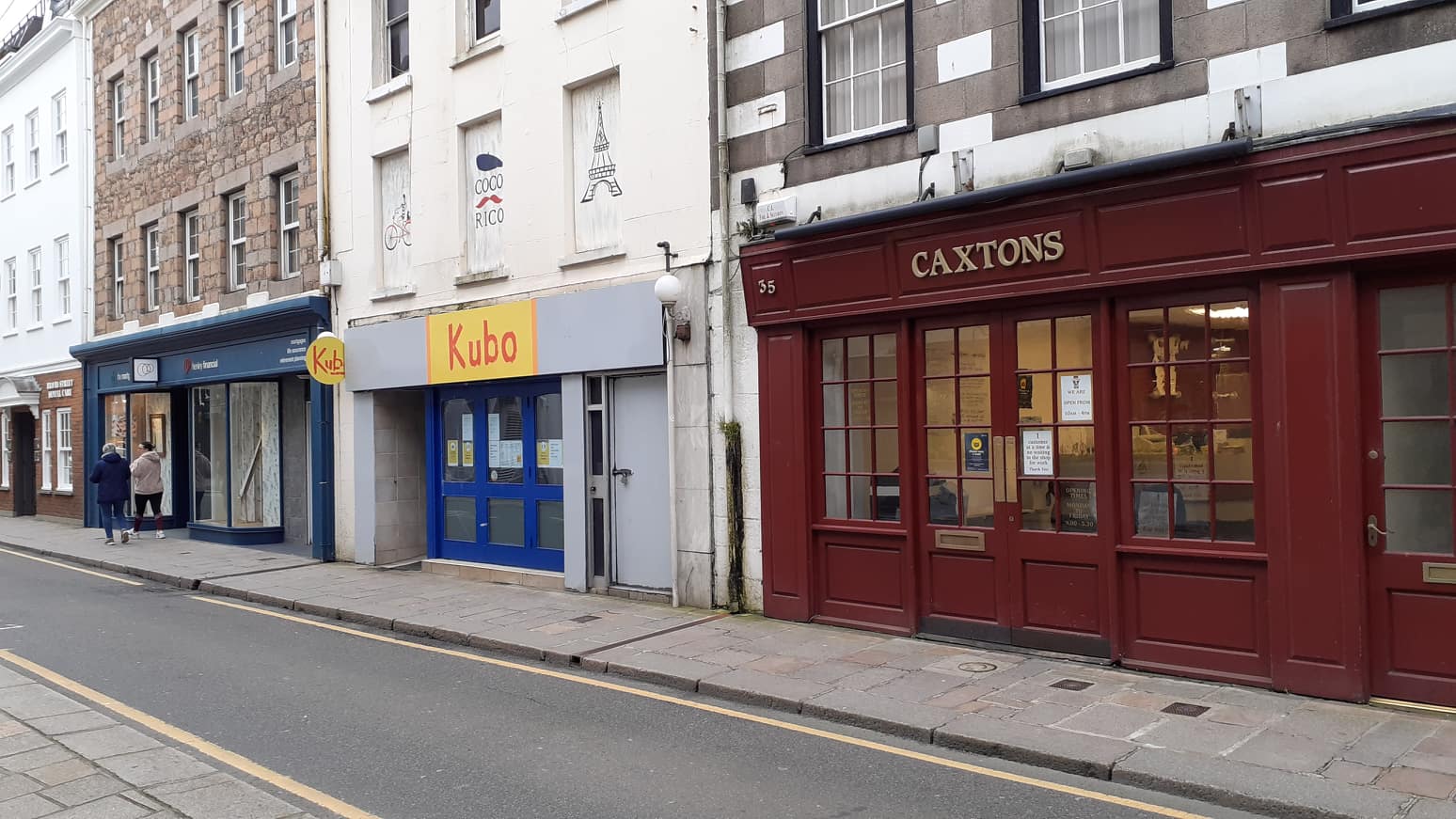
Pictured: Kubo owner Christian Bation said both deliveries of stock into Kubo, and deliveries out of the restaurant, were hindered by the street being closed.
This issue of deliveries was also cited by restaurant Kubo, situated further up on Broad Street, as a key barrier to business, sometimes having to go and get supplies from by the market and carry the heavy load back.
Meanwhile, Richard Jordas, Managing Director of Town Jewellers, expressed his frustration that there had not been any consultation with him before the proposition was lodged, and at a lack of communication throughout the process, saying that he would be “upset” if “Kevin Lewis went back on his word and didn’t open up the street.”
Of Constable Crowcroft’s proposition, he said he was not keen on the idea of buskers outside his jewellers, fearing they would keep away potential custom.
“I am not entertainment, I am not hospitality, I own a freehold on this street – I’m not giving up a lease and moving, I’m part of this street, and if this is the way it’s going to go, we should all be consulted in how it’s going to look,” Mr Jordas said.
Similarly, Silvia Ferreira, who runs SilvaLite Hair Salon on Charing Cross, said she thought the road reopening was “good for all the businesses. Because older people, they come in cars, they are getting dropped off in this road, and it’s just easier for them to access Broad Street and King Street.”
On this note of accessing the Blue Badge parking bays, Edward Trevor, who is the Chair of charity Shopmobility on Sand Street, which supplies manual scooters and chairs to those with disabilities, noted that he had a number of customers complain about the distance they have to walk from the replacement bays at Dumaresq Street, which he called “totally unacceptable.”
Furthermore, Mr Trevor expressed his worries more broadly at how the new infrastructure could affect town, saying he expected "excess traffic in Seale Street, clashes around the Sand Street car park and additional problems for those attending the General Hospital as many will have to go along Seaton Place and cross Gloucester Street or via the Parade and into Gloucester Street."
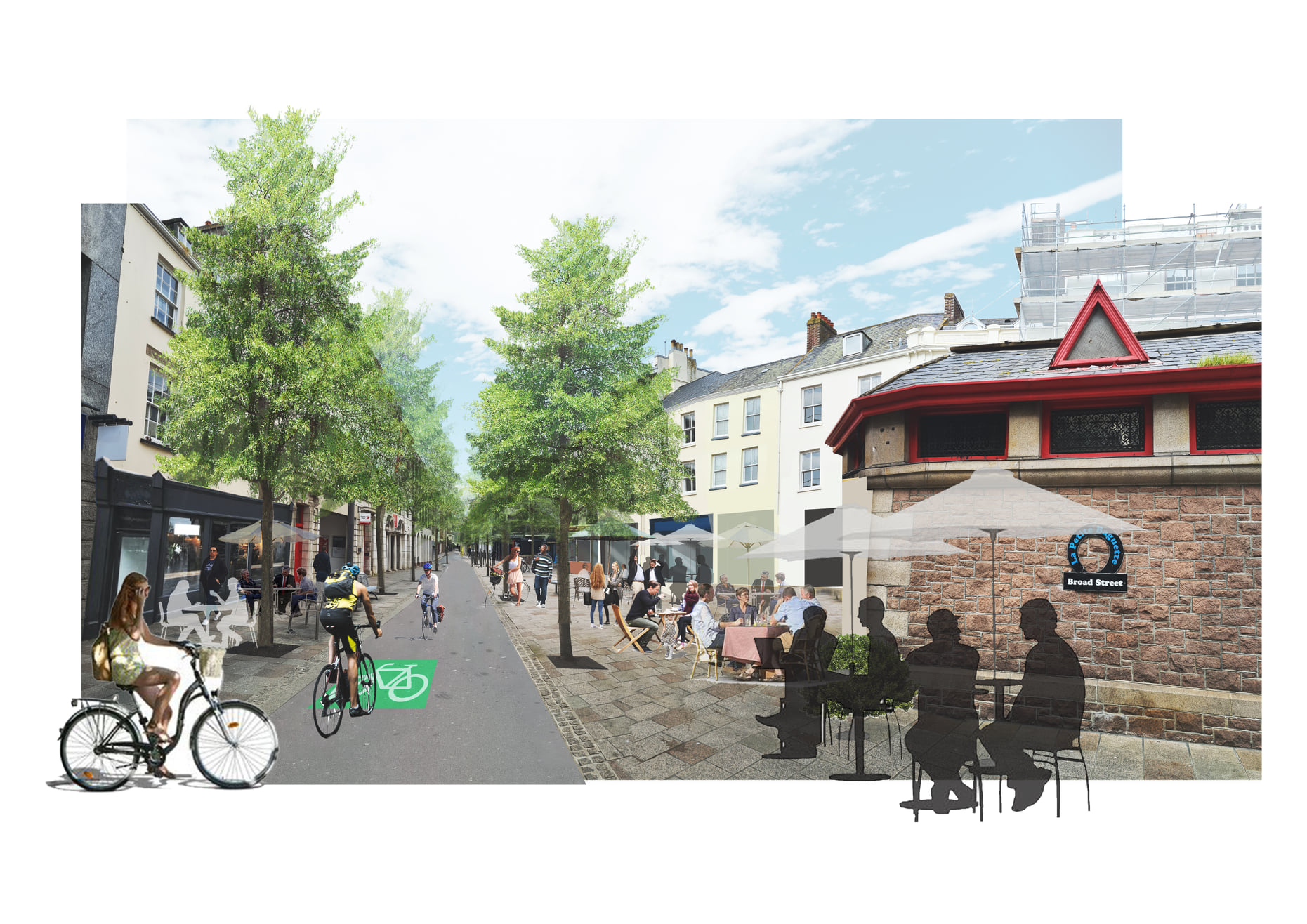
Pictured: The Association of Jersey Architects envisage a Broad Street altered to accommodate alfresco space, exhibitions and trees. (Image created by Kamil Kopycki)
However, some other stakeholders of the area are excited by the ideas on display, feeling that it will revitalise the street and bring more custom, whilst keeping unwelcome traffic out of town.
Brian McCarthy, Managing Director of Le Masurier, who own 31, 33, 35, 37, 39 and 41 Broad Street said: “We are fully supportive of the Constable’s proposal to keep Broad Street pedestrianised and indeed we would like to see this made permanent.”
For Richard Blampied of Aurum Jewellers, a traffic-free Broad Street would be a welcome permanent change, with the jeweller envisaging the street as a “mini-boulevard,” and arguing that “the centre of town is not meant to be a thoroughfare.”
Talking about the currently closed street, he said: “If you go outside and walk on the street, it is relatively quiet, people are stopping and chatting.
“We’ve had 52 years of buses and trucks… you would not believe the noise from the traffic going past."

Pictured: Aurum owner Richard Blampied said his business would welcome the continued peace that the closure currently brings.
Similarly, Blue Note owner Tomasz Tura said that he would not want to just see the street left as it is if closed, but would “very strongly” support the proposition if it meant the street could be redesigned as a “second artery” to town as the proposition states.
Speaking about what he would like to see, Mr Tura outlined his vision of “more benches, some additional Alfresco areas and just anything to look nicer… more trees would be amazing.”
He also echoed Mr Blampied’s sentiments that he would like to see traffic kept out of town and the area.
Indeed, this vision of a decorated Broad Street is a particular aspiration of the Association of Jersey Architects, who have been in talks with Constable Crowcroft about potential ideas for the street, including turning it into a hub of arts and culture.
Alison Horton, a member of AJA, said that while plans were in early stages at the moment, the Association saw the street as an opportunity to not only create wider alfresco areas and tree space, but also to “create a space where they could be a semi-permanent exhibition space or a stage.”
She added that it would form part of an even bigger “re-imagining” of St Helier, working as a “catalyst” for improvements throughout town, imagining “inter-linking” spaces, with potential for features like a cycle track.
“Some businesses are worried about football but I think they’re going to have more footfall… they’ll have more people walking past their shopfronts,” she said.
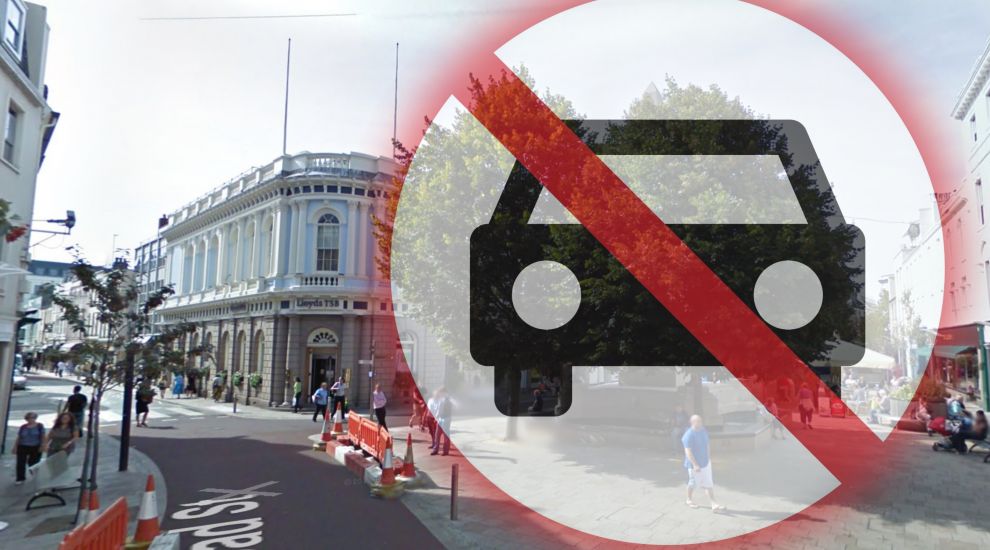
Pictured: The Association of Taxi Drivers said that keeping Broad Street shut could potentially increase traffic throughout town.
From the perspective of taxi drivers who regularly have to use town’s roads though, the move to close the street could impede on their day-to-day work.
Mick Tostevin, Treasurer & Secretary for the Jersey Association of Taxi Drivers, outlined how he felt it would increase both delays and traffic for drivers, furthermore criticising what he saw as a "personal agenda" from Constable Crowcroft to "turn St Helier into a cycle track."
“From the perspective of taxi drivers who have to get people to and from places a) taking the shortest possible route and b) for the cheapest possible cost, it seems a senseless idea to close off important roads to all traffic, including taxis…” he said.
“The problem with closing a busy link road like this is that it forces more traffic onto other roads causing traffic delays and if there was a traffic accident or other problem or road works then the traffic soon escalates to potential grid lock.”

Pictured: Cycle4Jersey see the pedestrianisation of Broad Street as a step towards a greener St Helier.
However, a spokesperson for cycling and sustainability group, Cycle4Jersey, argued that fewer cars in town and more islanders on foot would be better for islanders from both an environmental and wellbeing perspective, encouraging them to exercise, engage with shops and create less pollution.
“We want to close this road because it will revitalise town; we’ve seen scheme across the UK, Holland, Denmark… We’ve seen the benefits to businesses, to local communities, to residents, to visitors from these types of schemes where the car is removed and we’re able to generate or integrate businesses [and] community projects.”
They added: “There are more and more people living and enjoying St Helier, so we need to make these community hubs – we can’t have it that you’ve got cars who are from other parishes using things like the centre of town to cut through creating noise pollution [and] air pollution.”
Several businesses around the street have called out cyclists’ poor behaviour since the street's closure, saying they were going at dangerous speeds now they are allowed to cycle both ways on the road past 11:00, and had almost caused some serious accidents.
In response, the Cycle4Jersey spokesperson said this was only a “very small minority” that the group heavily discourage, suggesting that allowing new pedestrianised developments like street furniture and planters could make the road safer to ensure “pedestrians and bikes can live in harmony.”

Pictured: Constable Simon Crowcroft argued that town needed to drastically alter to combat the growth of online shopping.
Despite the vigorous debate, Constable Crowcroft remains firmly resolved to push forward his proposition.
"St Helier is facing an unprecedented crisis in terms of the effects of the pandemic – not only the shift from working from home, which hopefully will be addressed over time, but there’s been an exponential increase in people using the internet for their shopping," he said.
"We can't just go back to the way we were [and] let the through traffic funnel down Broad Street bringing actually no business to town... it really doesn’t bring in the kind of change that we need to see in people’s attitude to town."
However, when asked why multiple key businesses on the street said they were not consulted or approached before this proposition was lodged, the Constable said that “under normal circumstances, one would have expected this project to have proceeded in that way, with formal consultation,” but claimed that "because we've had it closed now for a year, a lot of that work has already happened."
On the issue of disabled parking having been moved to Dumaresq Street, he admitted that “it’s not as convenient, we accept that, but there is always the opportunity to look for more disabled spaces street spaces, particularly on Library Place,” and pointed out his proposition suggested a review into the matter.
Addressing businesses against the proposal, he "urge[d] them to give the trial a chance to prove its worth and if it doesn’t increase footfall into St Helier and into Broad Street and into their shops, then they will have a very good case for tasking for it to be discontinued at the end of the year.”
With the debate on the proposition coming on May 11, and still no signs of the Infrastructure Minister reopening the street, there is a tense air of anticipation from both sides of the debate.
For some, the proposition is symbolic of long-held suspicions that Broad Street would not reopen following its closure last year, and for others a chance to reinvent the centre of St. Helier's town.
But for all stakeholders though, the need to have clear, upfront and transparent answers from Government about what the future of Broad Street holds, is certainly more urgent than ever.
Comments
Comments on this story express the views of the commentator only, not Bailiwick Publishing. We are unable to guarantee the accuracy of any of those comments.